TC Auto Show to feature Truck Summit
Filed under: Equinox, Weekly test drives, Features, Autos, Uncategorized
By John Gilbert
If you are able to attend any of the world’s major auto shows — such as Frankfurt, Geneva, Paris, Japan, or the Big Four in the U.S., Los Angeles, Chicago, New York and Detroit — the magnitude is amazing. But that doesn’t mean the smaller population centers are any less intense in their interest. And most of them aren’t that small.
That interest in Minnesota will ride a new idea, armed with an impressive economic impact study that shows the auto show may have a financial impact on the region of $19 million every year, with a nine-day run that makes its earnings greater than the Super Bowl or the Final Four.
If you don’t care about the huge congestion at the Big Four shows, you might be able to calm down and enjoy the Twin Cities show., which runs from March 7-15.
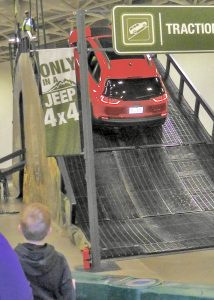
A young enthusiast was mesmerized watching drivers take on the Jeep off-road demonstration at the Twin Cities Show.
My fondest memory of the Twin Cities Auto Show came a few years ago, while taking a pre-opening run through the displays at the Minneapolis Convention Center. There was a Jeep display, where a huge hill had been formed and rides were given to show how steep an incline, and descent, the new Jeeps could handle, which was better than some state fair thrill rides. As I watched the demonstration, there in the foreground was a kid, exactly the kind of kid who might spend his spare time playing with a model truck in his backyard sandbox, and he stood there, transfixed as he gazed at the Jeep going up and over.
That was a couple years ago, and I should have realized then exactly why our country, and particularly our state, had started on a transition from cars to trucks.
It has happened, of course. And when the Twin Cities Auto Show opens March 7, 2020, the focus will be on its Truck Summit on March 6 to break down the reasons for the shift.
There are a lot of other significant vehicles that will fill the huge site, with particular emphasis on the emerging electric car phenomenon that could change the world’s auto industry. But there also will be dozens of trucks, from Ford, Ram, Chevrolet, Toyota, Nissan, Honda for pickups and all the newest SUVs and crossovers being shown by virtually all manufacturers.
We are fast closing in on the start of the U.S. major auto show season, which begins later with the Los Angeles show in late November, and continues with Chicago in February, New York in April, and Detroit in June. The Detroit date is the major departure, because it always has been in early January, but has shifted to summertime.
A lot of people in the auto industry are curious and anxious about that shift, moving the traditional mid-winter Detroit exposition to summer, and the anxiety is because a number of hard-core auto observers are concerned that the once-heralded major shows have faded in the intensity of interest by both auto makers and consumers. The question for us in Minnesota is, where does all that leave us, here in flyover land?
The Twin Cities Auto Show has always been a solid attraction for consumers, coming in early March, with the major difference being that while the four majors are manufacturer-backed shows, the rest of the nation’s shows are dealer-created. There are some large ones, such as Miami, Cleveland, Washington, D.C., Denver, Atlanta, and Minneapolis, among others, but instead of luring the hottest and newest concept cars and new introductions that the manufacturers save for the Big Four, the smaller shows are limited by whatever the local dealerships are willing and able to provide for display.
For 2020, the Twin Cities Auto Show is taking a proactive approach, for two good reasons. First, the Twin Cities dealerships — the Greater Metropolitan Auto Dealers Association — want a larger piece of the usually picked-over pie. Second, and perhaps more significant, the entire nation is being taken over by truck and SUV purchases leaving cars behind, and the Minnesota region is outstripping the rest of the nation in our hunger for trucks.
So the Twin Cities show organizers have come up with a plan and will hold an industry first, a National Truck Summit. The show itself will run from March 7-15 at the Minneapolis Convention Center, and on the eve of the show, Thursday, March 6, the GMADA will join up with Automotive News, the industry’s leading worldwide source for automotive information, to focus the industry’s attention on the show as the focal point for the truck and SUV industry.
“We love our trucks in Minnesotans,” said Scott Lambert, GMADA president, who produced some surprising documentation to back up what seems like a general claim. “We use them to pull our boats in the summer an to get home safely despite the snow and ice in the winter.”
Nationally, SUVs and pickup trucks now comprise 69 percent of all vehicles sold, which is a startling fact if you haven’t paid attention to the classification of vehicles joining you at the stoplight. In Minnesota, however, that number is over 82 percent — 82 percent trucks and SUVs, leaving only 18 percent for cars of all sorts.
“Minnesota is uniquely positioned to host a national discussion on consumer interest in trucks,” Lambert said. “They are really part of how we live and work here. We think we can make a dent in the truck market.”
Mary Velline, the Twin Cities Auto Show director, and Lambert approached the University of Minnesota’s department of economics and found precisely the right person. Professor Amil Petrin, who grew up in Michigan and got his doctorate at the University of Michigan, has been a professor at Minnesota for the past decade, and readily acknowledges he is a car fanatic.
“I come to the show here every year, just to see what’s new,” Petrin said, adding that he also has observed with some curiosity how major events such as the Super Bowl and the NCAA Final Four in basketball seem to readily pull out impressive numbers for their economic impact on the region, and, he noted, sometimes they get in trouble when the numbers are proven over-optimistic.
“Part of the reason I took this on is because in most cases, you can’t tell where they came up with the numbers,” Dr. Petrin said. “So when Scott and Mary contacted me last year and said they wanted to see an accurate appraisal of what the economic impact of the show was, I was eager to take it on. First of all, I love talking about cars.”
Petrin said there are internet surveys and various types of research that can be done, and he insisted his research would be both accurate and transparent. “That was part of what we did,” he said. “We studied how we could come up with with the most accurate way to measure better, and we rigorously set out to get the right raw data as an aid to the community.
“
We did a direct electronic exit survey and that was extremely helpful in determining how many people came for several days. At $19 million for an event that lasted only nine days, the economic impact of this show is both significant and wide-reaching. It indicated that in addition to ticket, concession and parking revenue, many visitors stayed overnight, to also attend sports events or for other tourist activities, like theater, or shopping downtown or at the Mall of America.”
Petrin’s study confirmed that the show attracts the obvious ticket revenue, and $670,000 in parking, and also generated over $10.5 million on food, lodging at hotels and Airbnb locations, and on other activities.
Show director Mary Velline pointed to the two-weekend run of the show, and said: “Each year, the Twin Cities Auto Show brings a large and reliable crowd of people from all over the country into downtown Minneapolis for two weeks. Besides show attendees, the downtown is filled with the people responsible for the set-up, take-down and display of the show.”
The day before the show opens, the Truck Summit will take over the Convention Center, with a luncheon, consumer focus groups, manufacturers representatives, the latest new trucks, and various demonstrations, including a panel of automotive experts and the release of two years of consumer data that indicates just why we’ve all become so crazy about trucks.
Recently, Motor Trend named the Ram 2500 Heavy Duty as its Truck of the Year, and the Kia Telluride as SUV of the Year, with the predictable Corvette as Car of the Year.


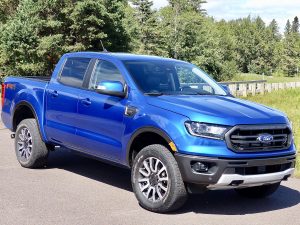
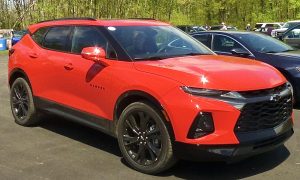
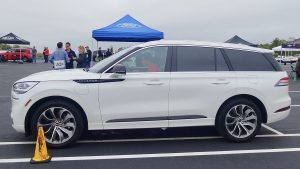
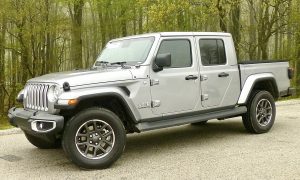
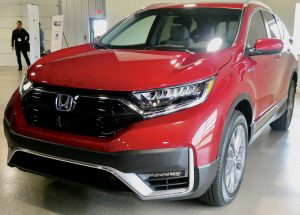
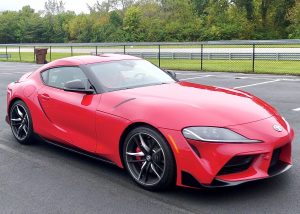

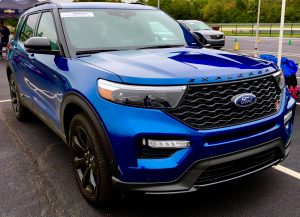
 John Gilbert is a lifetime Minnesotan and career journalist, specializing in cars and sports during and since spending 30 years at the Minneapolis Tribune, now the Star Tribune. More recently, he has continued translating the high-tech world of autos and sharing his passionate insights as a freelance writer/photographer/broadcaster. A member of the prestigious North American Car and Truck of the Year jury since 1993. John can be heard Monday-Friday from 9-11am on 610 KDAL(www.kdal610.com) on the "John Gilbert Show," and writes a column in the Duluth Reader.
John Gilbert is a lifetime Minnesotan and career journalist, specializing in cars and sports during and since spending 30 years at the Minneapolis Tribune, now the Star Tribune. More recently, he has continued translating the high-tech world of autos and sharing his passionate insights as a freelance writer/photographer/broadcaster. A member of the prestigious North American Car and Truck of the Year jury since 1993. John can be heard Monday-Friday from 9-11am on 610 KDAL(www.kdal610.com) on the "John Gilbert Show," and writes a column in the Duluth Reader.